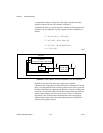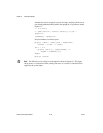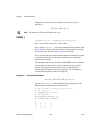
Chapter 6 State-Space Design
Xmath Control Design Module 6-20 ni.com
this measurement update, derived in [Kal60], are shown in the following
equations.
Substituting the system and noise matrices for the steady-state case, you
solve the discrete Riccati equation to obtain P and thence K
e
, as shown in
Equation 6-7 and Equation 6-8.
(6-7)
where
and the discrete feedback gain K
e
is given by
(6-8)
estimator( )
[Ke,ev,P] = estimator(Sys,Qxx,Qyy,{Qxy})
The estimator( ) function calculates the optimal gain matrix K
e
for a given dynamic system with specified process, measurement, and
(optionally) cross-weighting noise matrices.
Alternatively, K
e
can be obtained through a call to riccati( ):
[P,resid,Ke,ev]=riccati(Sys',Qxx,Qyy,{S=Qxy})
The syntax for riccati( ) is described in the Riccati Equation section.
As shown in the estimator diagram in Figure 6-4, the state equation for the
estimator is:
x
ˆ
k
x
k
K
e
y
k
Cx
k
–()+=
P
k
M
k
1–
C'Q
yy
1–
C+()
1–
=
A'PA A'PC' Q
yy
CPC'+()
1–
CPA– Q
xx
+ P=
AA' C'Q
yy
1–
Q
xy
–=
Q
xx
Q
xx
Q
xy'
Q
yy
1–
Q
xy
–=
K′
e
Q
yy
CPC′+()
1–
CPA′ Q
xy
+()=
x
ˆ
·
AK
e
C–()x
ˆ
BD–()uGω++=


















